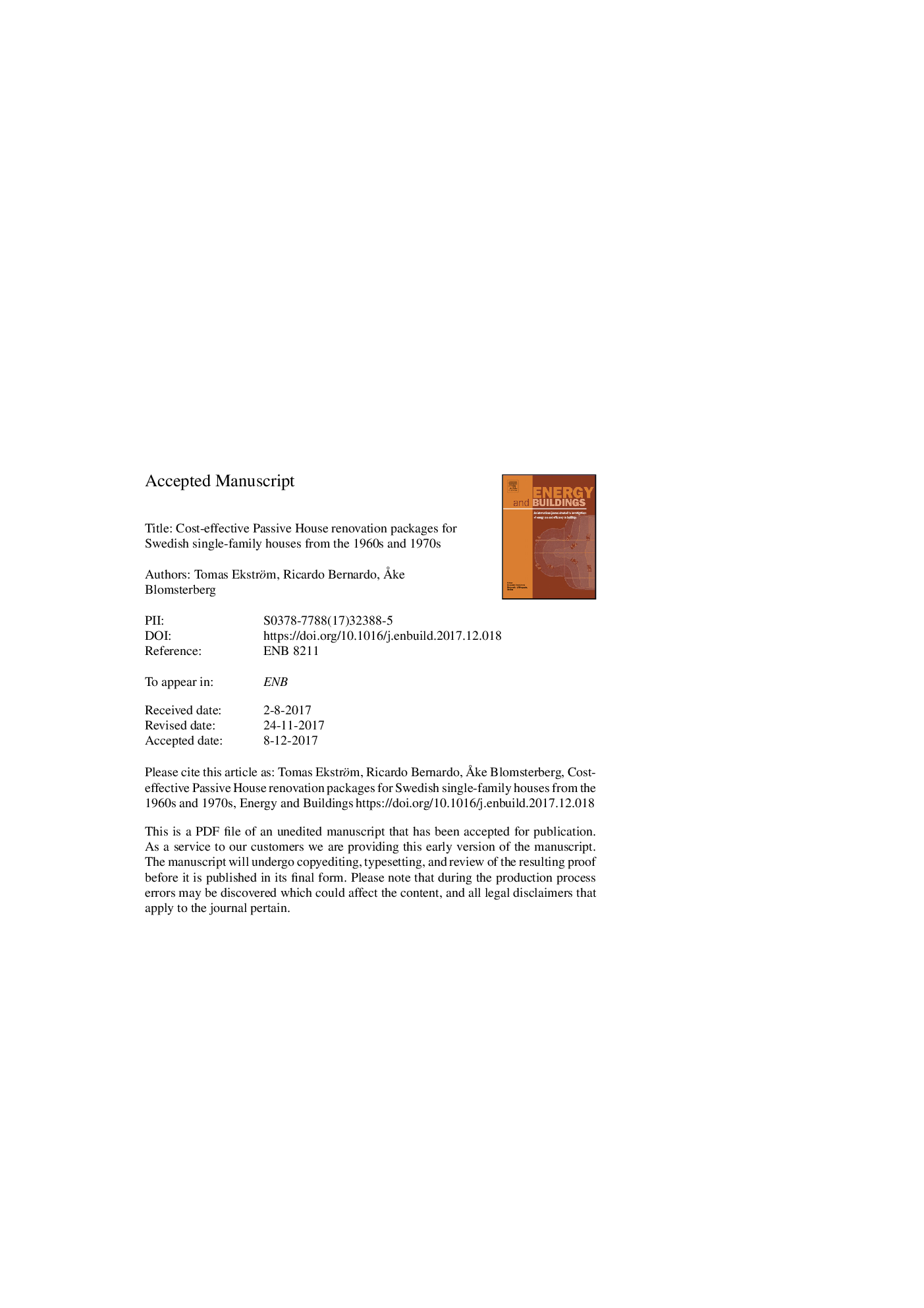| Article ID | Journal | Published Year | Pages | File Type |
|---|---|---|---|---|
| 6729041 | Energy and Buildings | 2018 | 18 Pages |
Abstract
This paper evaluates the cost-effectiveness of renovating single-family houses to Passive House level, as compared to maintaining the existing buildings or renovating to building regulation level. The assessment involved life cycle cost analyses, and concerns the Swedish single-family housing stock constructed between 1961 and 1980, which accounts for about a third of Sweden's two million single-family houses. These houses, now in need of major renovation, are represented in this study by two reference buildings. The results show that Passive House renovations can be cost-effective, but this largely depends on the type of heat generation used in the houses. The most cost-effective individual renovation measure was installing an exhaust air heat pump, and the least cost-effective was installing new windows. In houses using direct electric heating, the Passive House renovation package was the most cost-effective alternative.
Keywords
GSHPSFHLCCIRREEMHRVSolar Domestic Hot WaterDomestic hot waterDHWEnergy efficiency measuresBuilding regulationHeat recovery ventilationRenewable energy productionSingle-family housePassive houseSingle-family housesPhotovoltaicsNPV یا negative predictive valueCost-effectiveInternal rate of returnLife cycle costground source heat pumpExhaust air heat pump
Related Topics
Physical Sciences and Engineering
Energy
Renewable Energy, Sustainability and the Environment
Authors
Tomas Ekström, Ricardo Bernardo, Ã
ke Blomsterberg,
